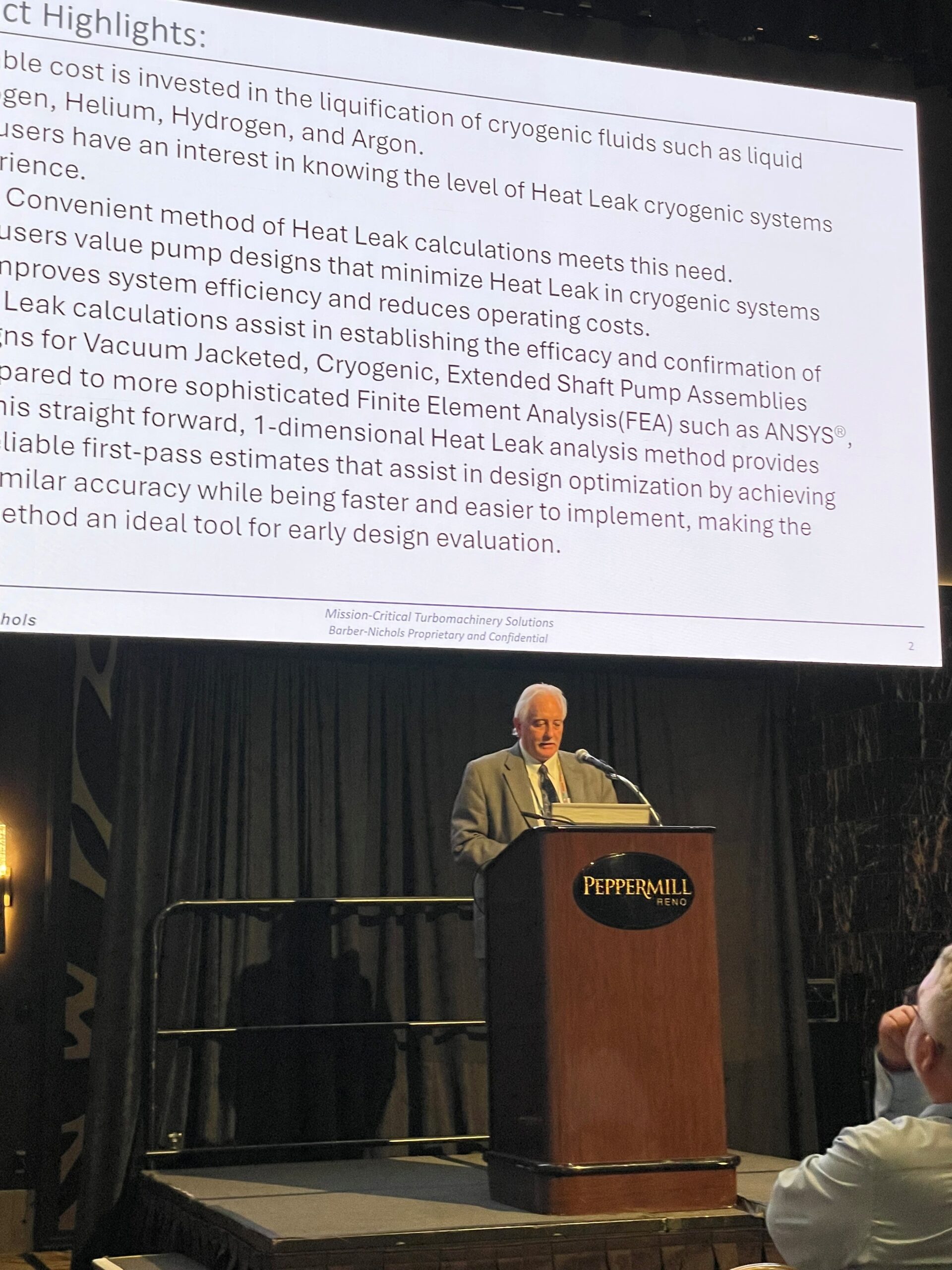This past week at the 2025 Cryogenic Engineering Conference (CEC) in Reno, Nevada our very own Chris Rista was honored to present his work on a streamlined approach to estimating heat leaks in cryogenic pump assemblies — offering faster, reliable results for early-stage design. Below is a synopsis of what he covered in his presentation:
- Why Heat Leak Estimation Matters
Liquefying cryogenic fluids like helium and nitrogen is energy-intensive and costly. Minimizing heat leaks in pump assemblies is essential for improving efficiency and reducing long-term operating costs. Chris emphasized the importance of a practical, fast method for estimating heat transfer during early design stages. - A Streamlined, One-Dimensional Approach
Instead of relying on complex Finite Element Analysis (FEA) tools like ANSYS, Chris introduced a one-dimensional heat transfer model. This approach provides first-pass accuracy using simple mathematical integration, making it ideal for quick, reliable heat leak assessments during pump design. - Focus on Extended Shaft Pump Assemblies
The presentation focused on vacuum-jacketed, extended shaft cryogenic pumps. A key design feature discussed was the use of Thermal Acoustic Oscillation (TAO) shields, which prevent convective and oscillatory heat transfer, significantly reducing heat leak potential. - Modeling and Calculation Highlights
Chris walked through the modeling process, which includes measuring material thickness, calculating cross-sectional areas, and applying temperature gradients. Heat leak is calculated using temperature-dependent thermal conductivity values for both stainless steel and helium, integrated across the pump shaft’s length. - Results and Impact
The model accurately predicted a total heat leak of 16.702 watts for the test pump assembly — closely aligning with more advanced simulation results. This reinforces the method’s effectiveness for guiding engineering decisions early in development without the need for high-cost software or time-consuming simulations.
Special Thanks
A big thank you to Chris Rista for representing our team at CEC 2025 and for sharing such impactful work with the broader cryogenic engineering community. His commitment to innovation and practical design solutions continues to push our capabilities forward and inspire excellence across the field. Great job, Chris!
🔗 Link To Full Presentation: https://barber-nichols.com/wp-content/uploads/2025/06/C1Po3D-06-Streamlined-Heat-Leak-Estimation.pptx



